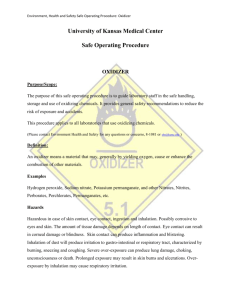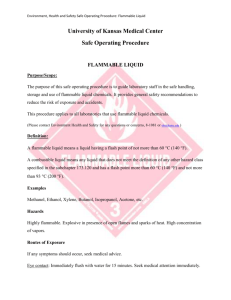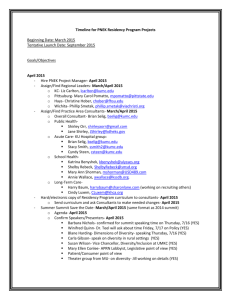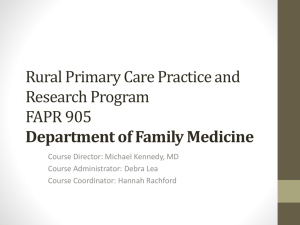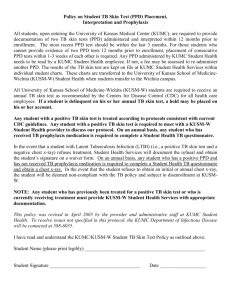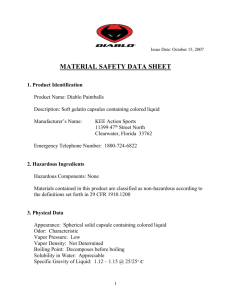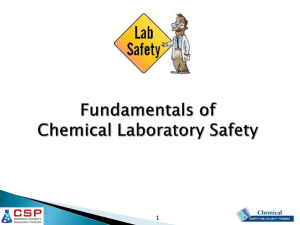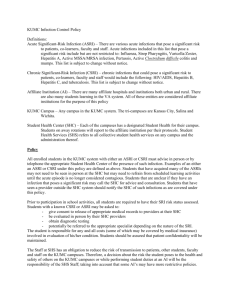Acids SOP - University of Kansas Medical Center
advertisement
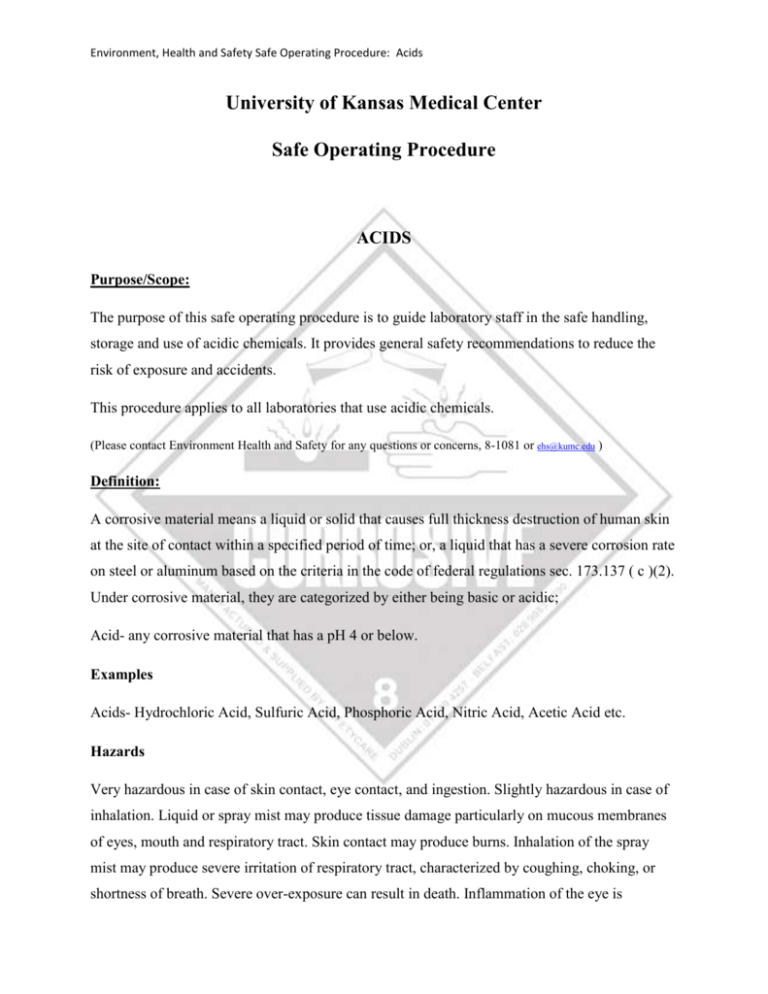
Environment, Health and Safety Safe Operating Procedure: Acids University of Kansas Medical Center Safe Operating Procedure ACIDS Purpose/Scope: The purpose of this safe operating procedure is to guide laboratory staff in the safe handling, storage and use of acidic chemicals. It provides general safety recommendations to reduce the risk of exposure and accidents. This procedure applies to all laboratories that use acidic chemicals. (Please contact Environment Health and Safety for any questions or concerns, 8-1081 or ehs@kumc.edu ) Definition: A corrosive material means a liquid or solid that causes full thickness destruction of human skin at the site of contact within a specified period of time; or, a liquid that has a severe corrosion rate on steel or aluminum based on the criteria in the code of federal regulations sec. 173.137 ( c )(2). Under corrosive material, they are categorized by either being basic or acidic; Acid- any corrosive material that has a pH 4 or below. Examples Acids- Hydrochloric Acid, Sulfuric Acid, Phosphoric Acid, Nitric Acid, Acetic Acid etc. Hazards Very hazardous in case of skin contact, eye contact, and ingestion. Slightly hazardous in case of inhalation. Liquid or spray mist may produce tissue damage particularly on mucous membranes of eyes, mouth and respiratory tract. Skin contact may produce burns. Inhalation of the spray mist may produce severe irritation of respiratory tract, characterized by coughing, choking, or shortness of breath. Severe over-exposure can result in death. Inflammation of the eye is Environment, Health and Safety Safe Operating Procedure: Acids characterized by redness, watering, and itching. Skin inflammation is characterized by itching, scaling, reddening, or, occasionally, blistering. Routes of Exposure If any symptoms should occur, seek medical advice. Eye contact: Immediately flush with water for 15 minutes. Seek medical attention immediately. Skin contact: Wash with soap and water. Seek medical attention if necessary. Inhalation: Report to fresh air, keep calm and at rest. Seek medical attention. Ingestion: Rinse mouth thoroughly. DO NOT induce vomiting and seek medical attention. Handling/Storage: Handling Acids- Keep locked up and container (s) dry. Do not ingest or breathe gas / fumes / vapor / spray. Never add water to these chemicals. In case of insufficient ventilation, wear suitable respiratory equipment. If ingested, seek medical advice immediately and show the container or the label. Avoid contact with skin and eyes. Keep away from incompatibles such as oxidizing agents, organic materials, metals, alkalis, moisture. May corrode metallic surfaces. Store in a metallic or coated fiberboard drum using a strong polyethylene inner package. Storage Acids- Keep container (s) tightly closed and in a cool, well-ventilated area. Make sure to segregate Acids away from any cyanides. Make sure to keep Nitric acid and Perchloric acid segregated from any flammable material as it is an oxidizer. Spills and Accidents: Acids- Stop leak if without risk. Absorb with dry earth, sand or other non-combustible material. Do not get water inside container (s). Do not touch spilled material. Use water spray curtain to divert vapor drift. Use water spray to reduce vapors. Prevent entry into sewers, basements or confined areas; dike if needed. Neutralize the residue with a dilute solution of sodium carbonate. Environment, Health and Safety Safe Operating Procedure: Acids Be careful that the product is not present at a concentration level above TLV. Check TLV on the MSDS and with local authorities. Ensure eye wash and safety shower locations are known. Fill out incident report form: http://www.kumc.edu/compliance/environment-health-and-safety-office-/forms/incident-report-form.html (Please contact Environment Health and Safety for any questions or concerns, 8-1081 or ehs@kumc.edu ) PPE (personal protective equipment) and Engineering/Ventilation Controls: Engineering/ventilation controls and/or proper work practices should be used to eliminate hazards. If these alone do not eliminate the hazards present then PPE should be used. PPE is ineffective if it is not used properly. PPE Personal protection: Avoid contact with skin and eyes when handling the product. Use only in well ventilated areas. Inhalation: In case of insufficient ventilation, wear suitable respiratory equipment. Hands and Skin: wear suitable protective gloves (nitrile), lab coat, etc. Eyes: Wear safety glasses/goggles. Engineering/Ventilation Controls Use only in well ventilated areas. Work conducted under a certified chemical fume hood is recommended. Please see the following link for information regarding work with chemical fume hoods: http://www.kumc.edu/Documents/compliance/safety/2012%20Chemical%20Fume%20Hood%20Plan.pdf Waste Disposal: The EHS office is required by Federal Regulations, the EPA, to properly dispose of all hazardous waste. Once a lab is ready to discard any hazardous materials, please fill out chemical pickup form located on the EHS website or follow the link below: http://www.kumc.edu/compliance/environment-health-and-safety-office-/forms/chemical-pick-up-form.html Environment, Health and Safety Safe Operating Procedure: Acids Special Precautions for animals: For any projects involving the use of chemicals or drugs on animals, all researchers must review and comply with the IACUC Chemical and Drug Hazard Policy. Additionally, the “Section H” portion within the IACUC protocol form is the designated location for disclosing all hazards (including chemical and drug use) for research involving animal models. The policy can be found at: http://www.kumc.edu/compliance/office-of-animal-welfare/policies-procedures-and-guidelines/iacuc-policies.html. Resources: Consult the individual chemical’s MSDS (or SDS) for additional information about the hazards and proper handling of each specific chemical. If you do not have an MSDS, several can be found on the following websites: http://www.sigmaaldrich.com/united-states.html http://www.fishersci.com/ecomm/servlet/msdssearchhome?showMSDSSearch=Y&storeId=10652 Other Resources: http://www.kumc.edu/compliance/environment-health-and-safety-office-.html Keegan, Robert. J. (2011/2012). Hazardous Materials, Substances & Wastes Compliance Guide. Kutztown, PA: Robert J. Keegan.
